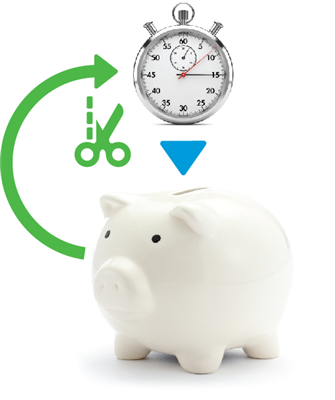Written by Dave Erlandson of Caslon
When it comes to justifying workflow automation, especially in small to mid-size print shops, getting a good fix on the ROI can be elusive. That’s because labor savings on each job might not translate to immediate dollar savings. And the added benefits of fewer errors has compounding benefits downstream, from the bindery through to customer service, that are often hard to calculate in advance.
Even if you can get the funds to buy the necessary software, you aren’t guaranteed success. That’s because change is hard. “This is the way we’ve always done it around here” is a line often heard in shops everywhere. The resistance to change can be a huge barrier to implementing workflow improvements. It can be really frustrating for the person who can see the end benefit of change way before the other team members. “Why doesn’t everyone see the benefit?” can be expressed. It often takes persuasion and persistence to implement the desired changes.
Case in point: Chris Bradshaw’s story of implementing Xerox FreeFlow Core in the AlphaGraphics shop in Layton, Utah. Chris joined the franchise about 18 months ago as General Manager, working directly for the owner. Chris’ tenured background included production experience and IT experience, along with a passion for using technology to improve business results. Even before his first day on the job Chris knew he wanted to add automation to the shop, but it wasn’t as easy as he thought it would be. It turned out that implementing the technology was the easy part.

Chris didn’t come into a shop that was running poorly, in fact just the opposite. The owner had consistently grown the business year over year and was making money. The shop consistently ranked from 12th to 16th nationally among 265 franchises. Business was good. No pressing need to change. But Chris saw things differently. He saw a workflow for color digital jobs that had too many touches, required too much labor, and resulted in too many mistakes.
The AlphaGraphics shop in Layton, Utah is a typical quick printing shop. Eighteen employees work hard to produce a wide range of products and services from short run printing to signs to direct mail campaigns. Printed documents include brochures, postcards, business cards, booklets, manuals, flyers, and invitations – all the usual items. A Xerox 800 Color Press and Versant 80 were used for color production. While 97% of the business is B2B, there is still a walk up business, which naturally requires more staff attention.
Chris knew the digital color workflow could be streamlined, but it really became evident when they purchased a new Duplo slitter. Now the orders had to be imposed correctly for the slitter, which was taking extra time, jobs were often being handled by designers adding even more labor costs, and the error rate was too high causing waste or worse yet – an unhappy customer.
Chris began to evaluate technology options and quickly settled on FreeFlow Core. The technology allowed him to automate imposition based on a few simple parameters: printer, sheet size, and bleed or no bleed.
The initial result was a savings of 5 minutes per job across 25 to 30 jobs per day. While significant, this didn’t lead to any immediate staff changes. However, over time as natural turnover occurred, this led to a re-thinking of staffing and duties and a net reduction in headcount. The other benefit the franchise gained was that standardizing the workflow has resulted in fewer errors, which means less waste and fewer calls to CSRs. The end result: labor savings in production, labor savings for the CSR team, and more satisfied customers. Looking back the ROI is clear; investing in workflow automation, even for a small or medium size job shop can pay big dividends.
Think automation can work for you too? On April 19th at 2:00 PM ET you’ll have a chance to hear Chris’ story live and ask him questions as Xerox is sponsoring a PODi webinar titled “Workflow Automation – What Every Printer Needs to Know”. Please join us for this free information-sharing webinar!



